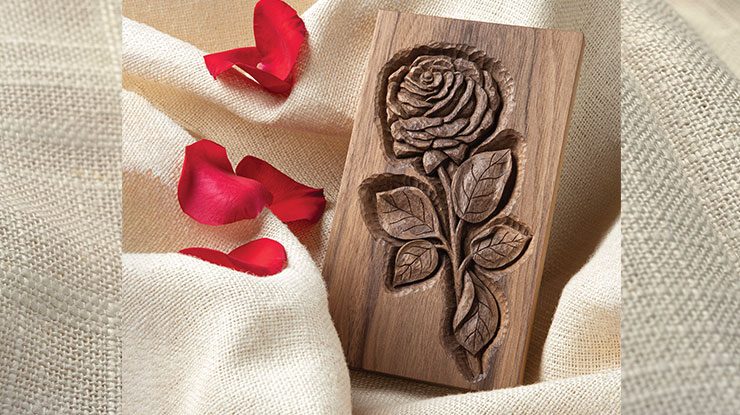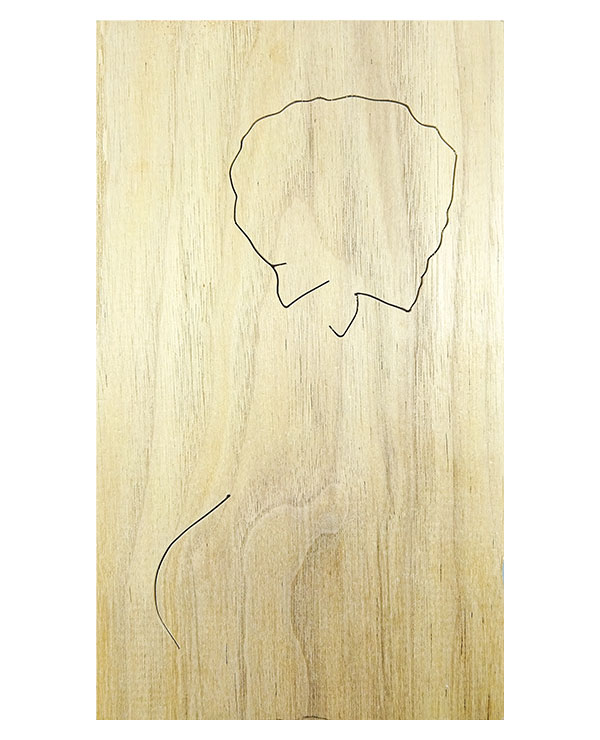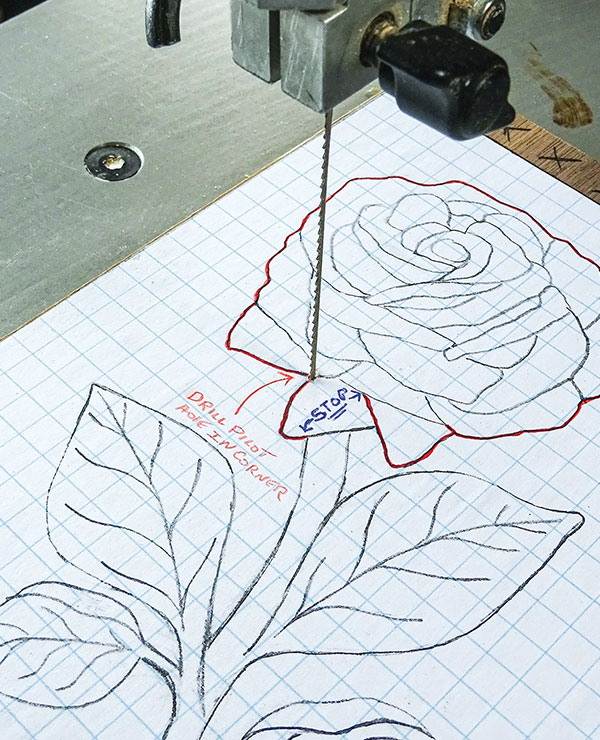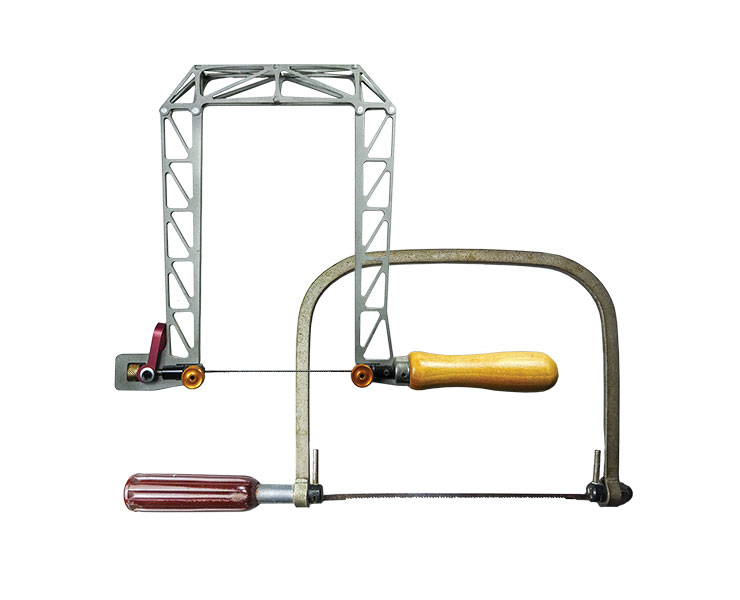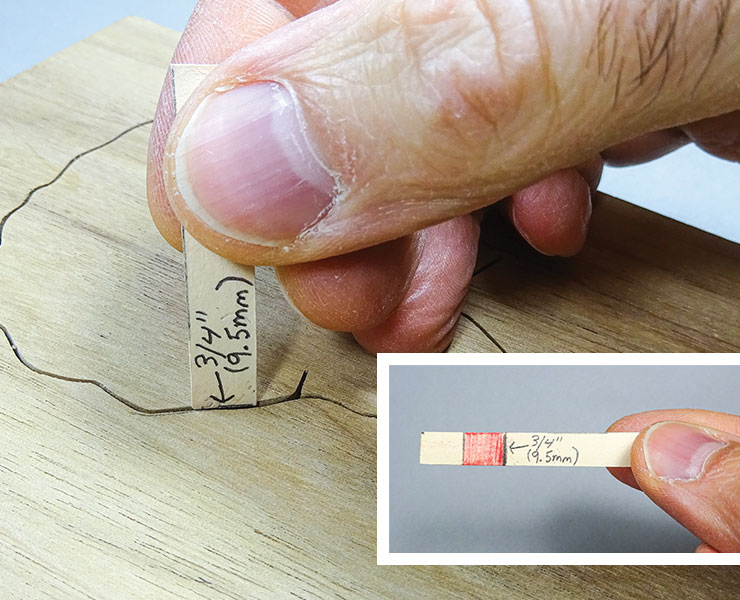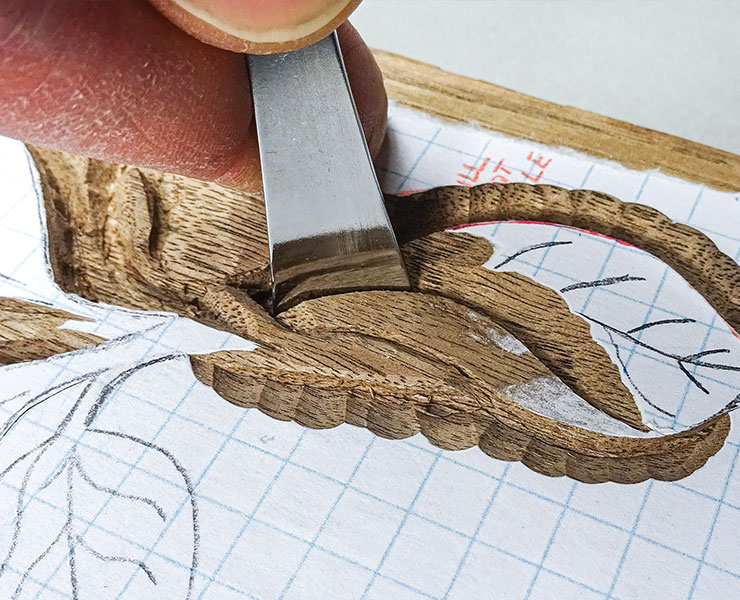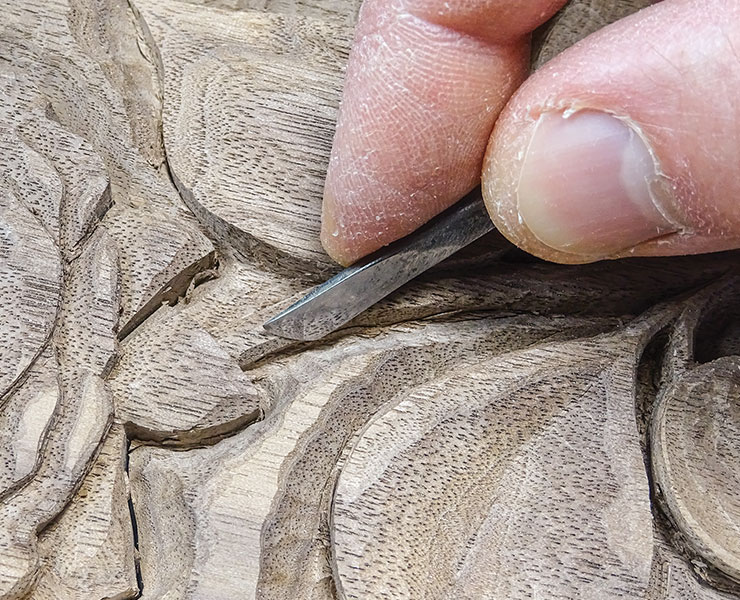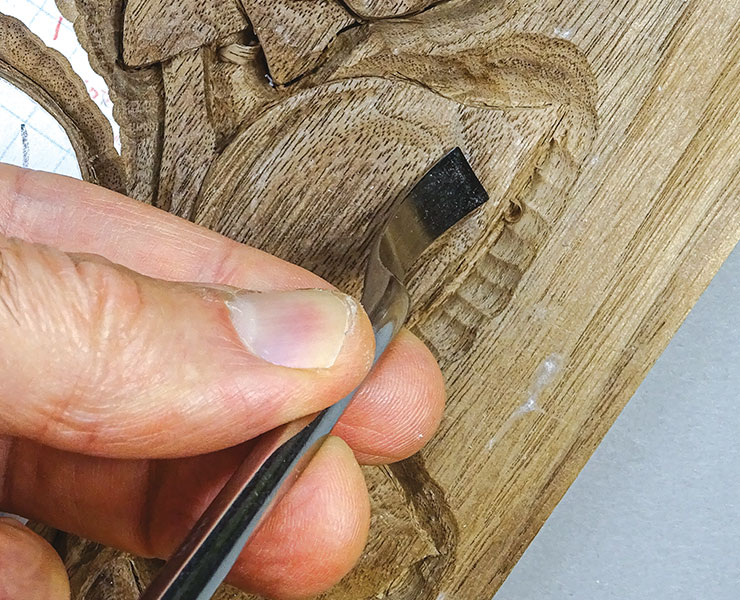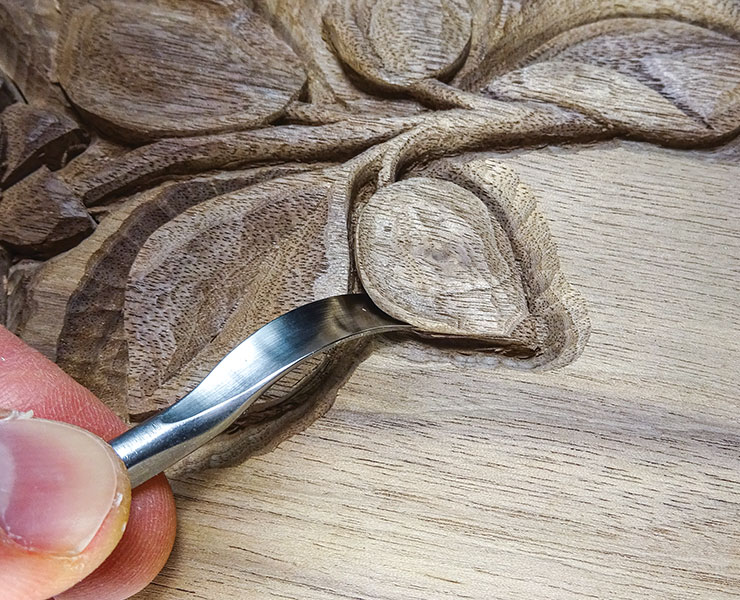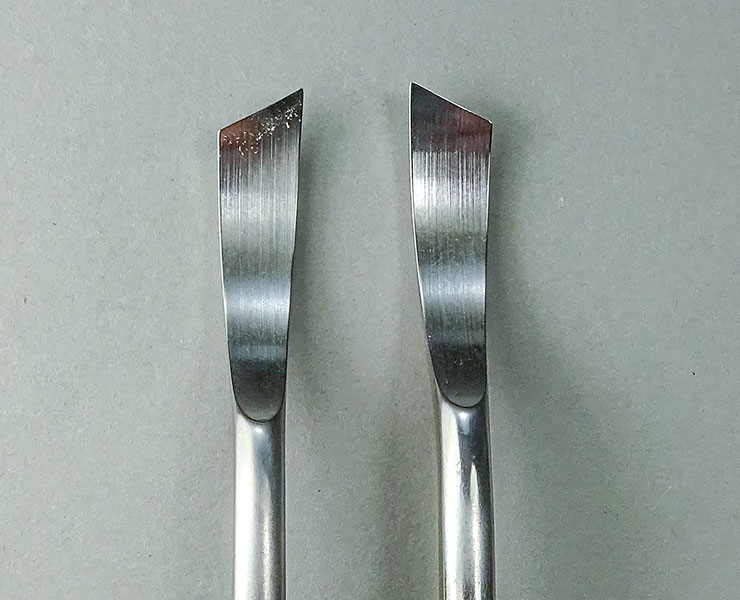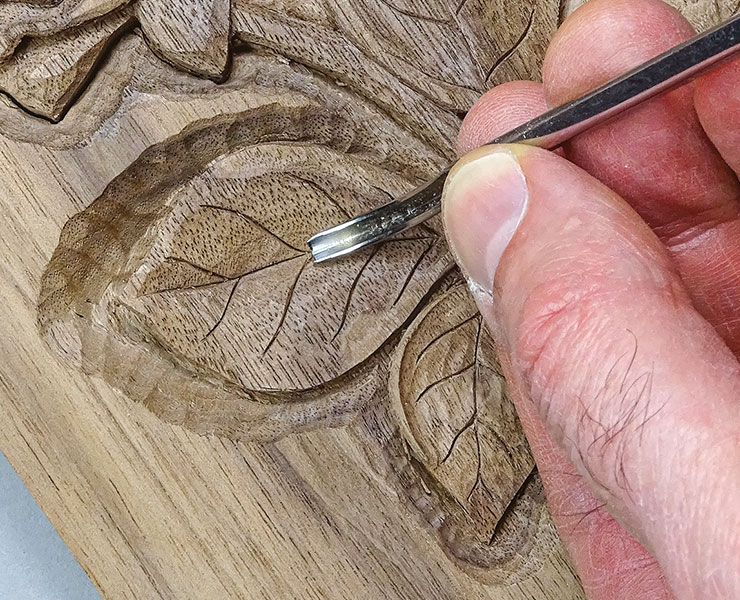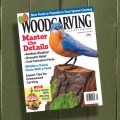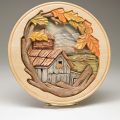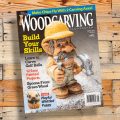Learn about uncommon tools, ideal woods, and a game-changing technique
By Joseph A. Savarese
If you’re just getting started with relief carving, there’s a lot to take in. My goal in this article is to introduce approaches to design, woods you can try other than common basswood, useful techniques, and non-traditional carving tools on the market. As you pick up new tricks and techniques, be sure to stuff them into your pockets and carry them with you throughout your carving journey. You can even merge them with your own creations to form a unique carving style! I chose a rose as the subject, as it’s a popular flower and was my mother’s favorite. However, you can apply these techniques to any subject.
Safety NoteA carving safety glove was not used for this project because the project was clamped to my workbench and my hands were holding the tool in use. If your hand(s) will be in harm’s way, please wear a safety glove. |
Getting StartedWhen designing any pattern, I use the following supplies: graph paper, a ruler, mechanical pencil (to keep the lines consistent), a drawing kneaded eraser (it’s easy to shape to get into tight spots), tracing paper, a light box, calipers (perfect for transferring measurements), and lots of photos of the subject. Nature is one of the best sources for ideas; barring that, search the internet for photos you can use as inspiration. Once you land on a subject, sketch it out and refine it until you are happy with the shape and level of detail. |
Wood SelectionWhen designing a new carving, ask yourself if you plan on painting the piece or taking advantage of the wood’s natural appearance. If I decide I will paint it, then basswood is my top choice. If I’m keeping it natural, mahogany and walnut are great options. BasswoodMost woodcarvers in the United States enjoy using this wood. Its real name is linden or lime wood (which it’s regularly called in Europe). With its straight, fine, and even-textured grain, this lumber holds detail extremely well, making it a pleasure to carve and paint, but not stain. Due to the wood’s properties, if staining is not done carefully, the piece that you spent so much time and dedication on will come across as uneven and blotchy. If you decide to use a traditional stain, apply a wood conditioner first. Mahogany Mahogany has excellent carving properties and accepts finishes well. It’s strong, stable, and a pleasure to carve because it holds detail nicely. Due to overharvesting and high demand, it’s pricey compared to other woods on the market. Black Walnut Widely available and classified as a hardwood, black walnut has an extremely high resistance to denting, and it’s hard, strong, and stable. It is a pleasure to carve with hand and power tools provided the woodgrain is straight. It holds detail well and looks beautiful when finished. |
Pattern TransferWhen it comes to transferring the pattern to the wood, I recommend one of three techniques: (1) Using a craft glue stick, apply the pattern directly to the wood. With this technique, you need to sand off the excess paper and glue before applying the finish. (2) Place a sheet of graphite transfer paper between the wood and the pattern, using blue painter’s tape to hold into place. Then, using a stylus tool or ballpoint pen (a pencil may tear the pattern), trace the pattern, transferring the image onto the wood. (3) Use a pounce wheel tool to carefully trace over the pattern. This tool will leave tiny indentations in the wood. Then, using a pencil, connect these tiny indentations to reveal the blueprint image. |
TIP: Ebony and IvoryGraphite transfer paper comes in black and white. Use white to transfer images to darker woods so you can easily see the image. |
All About That BevelNew carving tools are usually shaped with a cutting angle of 19° to 25°. From experience, I find this angle range fine to carve the three woods previously discussed. If you face difficulty, it may be because the cutting-edge angle is too low, making it too weak to carve this wood. In this case, grind a steeper cutting angle on your tool, such as 25° to 30° or even higher. This will give you a more durable edge. Always test the tool on scrap wood to determine if the tool is cutting the way you would like it to. |
Specialized Carving ToolsDetail the rose. For this part, you can source specialized carving tools that can be used for relief carving from a range of specialty woodcarving tool manufacturers. Here are a few you may not have tried: |
Dental PickThis is a great tool for reaching into all the nooks and crannies of your carving. |
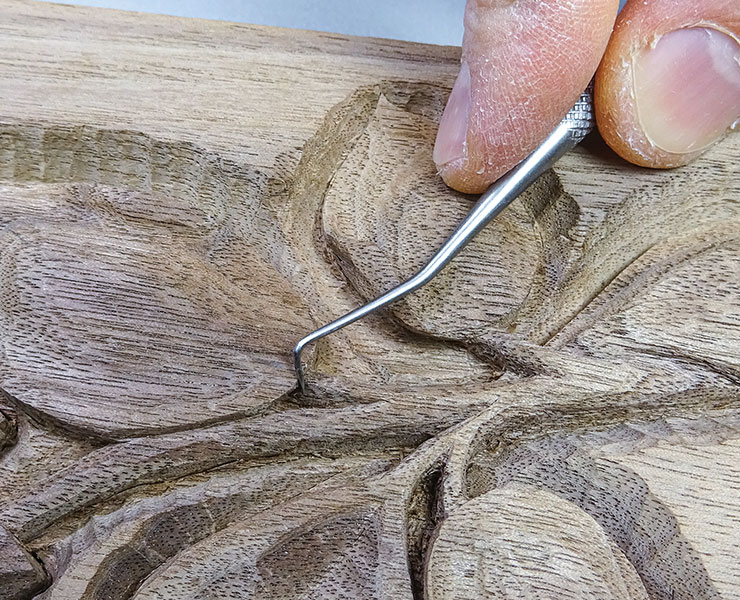 |
Dogleg Skew ChiselThis 90° bent skew chisel is perfect for leveling out the background of your relief carving or to reach into deep nooks and crannies. |
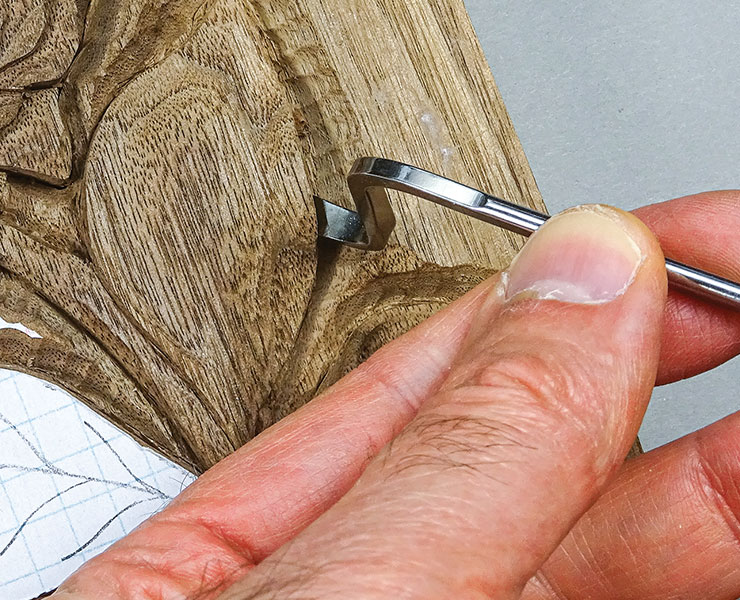 |
TIP: Custom ToolsIf there is a tool you don’t see on the market that would help you with a specific project you’re working on, contact a blacksmith to get it specially made. You may even come across a blacksmith at a local carving show. For example, I needed a fishtail gouge with a deeper curve than any I could find online, so I had one custom-made by carving legend Harold Enlow. |
Sanding the CarvingPlace a sheet of 120-grit sandpaper on a flat surface and, while holding the plaque on its edges, carefully sand the entire front and back of the plaque, going in the direction of the grain. Depending on the pattern transfer technique you used, repeat this process (and vacuum the sawdust from the project frequently) until you remove all the residual pattern, glue, and/or pencil markings. Move to 150-grit sandpaper and repeat. During this process, you might unintentionally sand some of your carving. Look it over and fine-tune those areas. Then sign your work with a woodburner. |
Applying a FinishApply all finishes in a well-ventilated area, wearing disposable rubber gloves and appropriate eyewear. Always practice on scrap wood first to make sure you like the look. Here are a few that work well for the rose, as well as any relief carved in hardwood: Wipe-On PolyurethaneUsing a disposable paintbrush, apply a liberal amount of wipe-on polyurethane (satin or gloss, depending on your preference) and immediately wipe it off using a cotton rag. Use an additional disposable brush and/or rag to remove any excess puddling in the nooks and crannies. Allow the finish to dry, following the manufacturer’s instructions. Using very fine steel wool (grade #0000), carefully buff the finish and remove (with a vacuum or soft brush) any debris. Apply a second coat of wipe-on polyurethane using the technique previously described. Dispose of rags and brushes carefully; as the finish cures, it generates heat and can spontaneously combust. Boiled Linseed Oil and Howard Feed-N-Wax®Apply a liberal amount of boiled linseed oil over the entire carving using a disposable brush. Let it soak into the carving for about seven minutes and remove the excess by rubbing with a clean rag. Allow the finish to dry for at least three days. Dispose of the rags and brushes carefully for combustion safety. Then, apply Howard Feed-N-Wax® with a disposable brush. Let it set for at least 20 minutes, and then rub off the excess. Use an additional disposable brush and/or rag to remove any excess puddling in the nooks and crannies. Buff using a shoe brush and set aside to dry for two days. |
| About the Author |
|
Joseph A. Savarese was inspired to carve when, at age seven, he saw his Scoutmaster, Roy K. McGinnis, Sr., carve a deer from a block of sugar pine. Joe would like to express all his love to Patricia and Christopher. Without their love, support, and patience (especially when finding an occasional wood chip throughout the house), these five articles and counting wouldn’t exist. For more of Joe’s work or to view several how-to videos on woodcarving, visit his website at whittleandchips.com, his YouTube channel, MisterSplinters, or his Instagram @mistersplinters. |
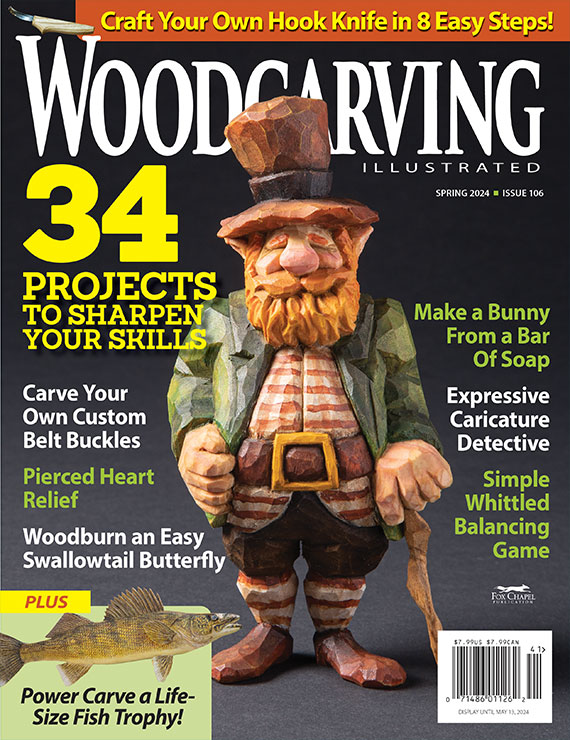 |
Get the Spring 2024 Issue Purchase the IssueFor more articles like this, subscribe to Woodcarving Illustrated magazine. Magazine SubscriptionPlus! Get digital mini magazines in your e-mail between printed issues.
|


